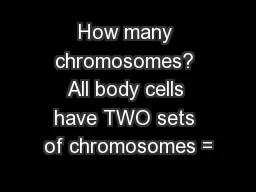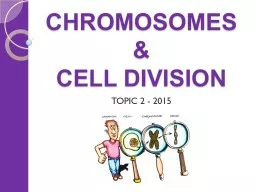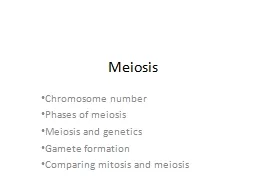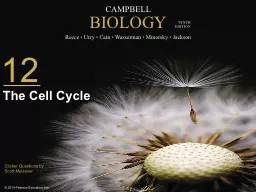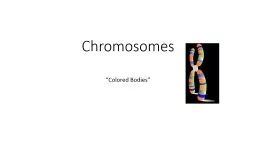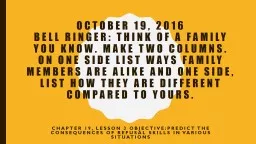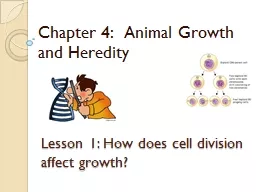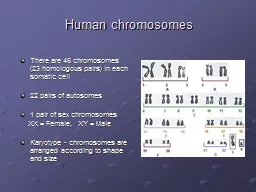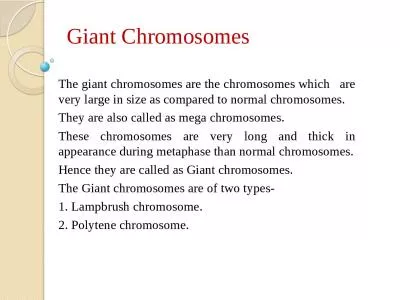PPT-How many chromosomes? All body cells have TWO sets of chromosomes =
Author : danika-pritchard | Published Date : 2018-02-07
diploid Sex cells gametesgerm cells have only one set of chromosomes haploid That means when fertilization occurs the new individual will have the correct
Presentation Embed Code
Download Presentation
Download Presentation The PPT/PDF document "How many chromosomes? All body cells hav..." is the property of its rightful owner. Permission is granted to download and print the materials on this website for personal, non-commercial use only, and to display it on your personal computer provided you do not modify the materials and that you retain all copyright notices contained in the materials. By downloading content from our website, you accept the terms of this agreement.
How many chromosomes? All body cells have TWO sets of chromosomes =: Transcript
Download Rules Of Document
"How many chromosomes? All body cells have TWO sets of chromosomes ="The content belongs to its owner. You may download and print it for personal use, without modification, and keep all copyright notices. By downloading, you agree to these terms.
Related Documents

